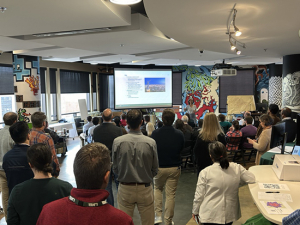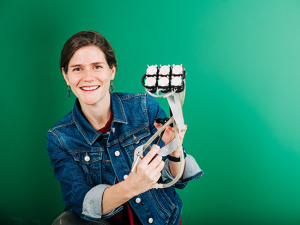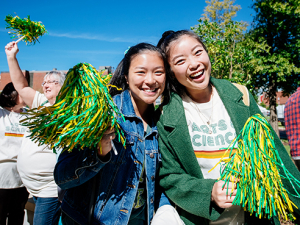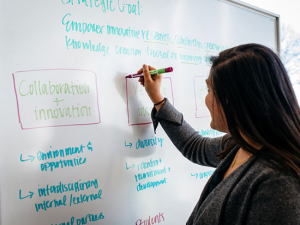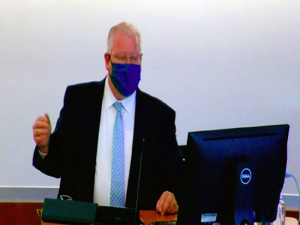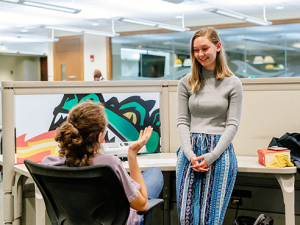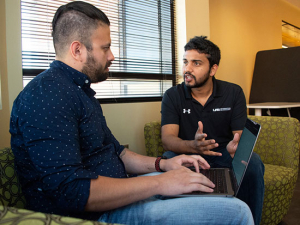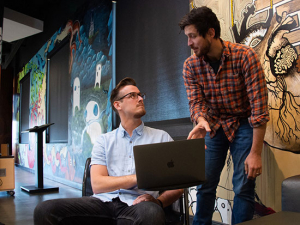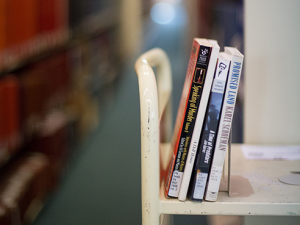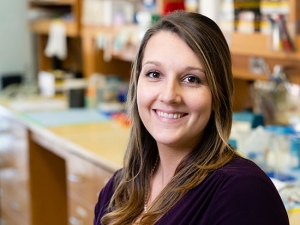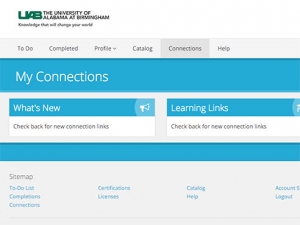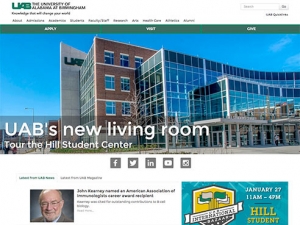It almost sounds like something you would hear on The Sopranos. “Hey Silvio, we’re out of concrete shoes, get me the concrete canoe.”
However, UAB civil engineering students have constructed a solid concrete canoe that will do what seems to be impossible — float on water.
The students recently completed construction of a 10-foot concrete test canoe that is a scale model of a 20-foot concrete canoe they plan to race in the American Society of Civil Engineers (ASCE) regional concrete canoe competition in March. The students, part of UAB’s ASCE student group, began work on the project immediately after this past year’s competition — one in which they were unable to compete.
“We’ve made a concrete canoe each of the past three years, but it’s always broken for one reason or another,” says Ethan Parker, a senior civil engineering major from Odenville and concrete mix specialist on the project. “We started working on this year’s during summer break. We’ve had to do a lot more testing, and we were here building the mold during winter break. We’re trying to get as much done as we can to make sure we’re ready.”
The students decided a test canoe was needed, and they took their scaled-down canoe to the Campus Rec Center for its first real test.
Once they got it in the pool, senior Paisley Marotta climbed on board; they were pleased with what they saw.
“The calculations said it would float, and it did,” says Daniel Brown, president of UAB ASCE and the mold design and construction specialist. “The density of water is about 62 lbs. per cubic foot. The density of our canoe was 58 to 60 lbs. per cubic foot. We knew based on the math and the wide hull, the buoyant force of the water was going to give it some support.”
UAB’s ASCE is a volunteer student organization that has been active for almost 40 years. The main motivation for the students’ concrete canoe project is to represent UAB and their developing skills as young engineers at the annual student conference. UAB students compete head to head against their peers at Alabama, Auburn, Tennessee and other regional institutions in a number of civil engineering-related events.
Jason Kirby, Ph.D., associate professor of Civil Engineering and advisor to the ASCE, says this contest has been a difficult one for UAB students the past few years despite their dedicated efforts.
“This event is the most challenging competition and requires year-round student participation,” Kirby says. “Regardless, UAB ASCE members continue to push the envelope of design and this year have an approach unique to our region.”
The ASCE National Concrete Canoe Competition provides students with a practical application of the engineering principles they learn in the classroom, along with important team and project-management skills they will need in their careers. The event challenges the students’ knowledge, creativity and stamina, while showcasing the versatility and durability of concrete as a building material.
The winners of the ASCE National Concrete Canoe Competition are determined by compiling the team’s total number of points from the academic and race portions of the competition. Academic scholarships totaling $9,000 are awarded to the winning teams’ undergraduate civil engineering program.
Brown says this year’s UAB team decided to try a new concrete mix after the difficulties of previous years. The students consulted with other schools that had been successful in the competition. They then went to Atlanta to visit several different companies to find the materials they needed.
The students began testing concrete mixes in the fall, built the molds and poured the mini canoe in October.
“Building the molds is actually the most time-consuming part,” Parker says. “We have to cut out cross sections, build a frame for the mold and put planking along the mold so we can put fiberglass on it, which adds strength and holds the concrete. Then we sand it down and give it a smooth finish. It does take a while, probably close to 300- to 400-man hours to do the molds. And we’re a small group. There’s a lot of work we have to get done, which means all of us have to put in more time.”
The project is not connected to any class or grade, but the student effort doesn’t go unnoticed, Kirby says. In addition to donating their free time and skills, students often use their financial resources to design, build and hopefully compete in their vessel.
“As the UAB ASCE faculty advisor, I’m always impressed by the innovation and independent spirit of our students,” Kirby says. “Each year I share in their victories and disappointments. I’m proud of UAB ASCE and know that all of these students will graduate and become fine young engineers.”
In addition to Parker and Brown, the UAB team comprises senior Jennifer Kao of Birmingham, senior Paisley Marotta of Huntsville, junior Joe Phillips of Odenville, junior Lonny Traylor of Montgomery and doctoral student Jaquice Hughes Boyd of Brighton.
“Having a good team backing you up is the most important thing when taking on an endeavor like this,” Brown says of the group. “It’s great having good, dependable people you can trust to work with.”
While graduation is on many of the students’ minds, so is March 22. That’s when they have to have their vessel completed and ready to display at the Southern Regional competition in Tallahassee, Fla. The winning school in Tallahassee will represent the South Region in the national competition later this semester. The regional competition will be tough. The students will have to display the canoe, including the material that shows their work on the canoe, give a presentation and, ultimately, race the canoe in five events.
“Hopefully we will win,” Parker says. “That’s our goal.”
Follow their progress on the UAB A.S.C.E. Facebook page.


